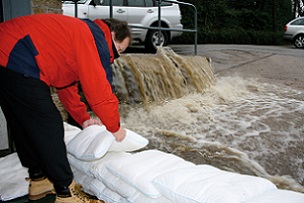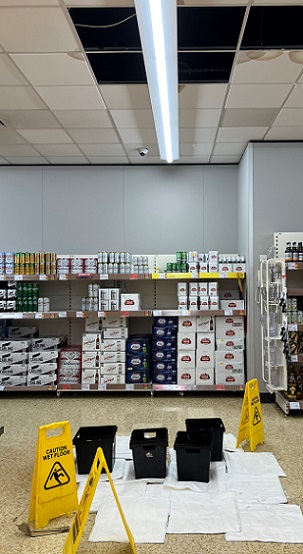 Yes, it’s autumn so expect a lot more of this meteorological misery
Yes, it’s autumn so expect a lot more of this meteorological misery
 FloodSax alternative sandbags keeping torrential floodwater at bay
FloodSax alternative sandbags keeping torrential floodwater at bay
 Heavy downpours can quickly cause expensive leaks which can be quickly soaked up by FloodSax indoors
Heavy downpours can quickly cause expensive leaks which can be quickly soaked up by FloodSax indoors
Prepare to be battered by Bert … all the UK storm names for 2024 and 2025
When bad weather strikes the UK this year you’ll be getting battered by Bert, lashed by Lewis, mauled by Mavis and rained on by Rafi.
For these are the storm names that will be used by the Met Office for the next 12 months until August 31, 2025.
The full list is Ashley, Bert, Conall, Darragh, Eowyn, Floris, Gerben, Hugo, Izzy, James, Kayleigh, Lewis, Mavis, Naoise, Otje, Poppy, Rafi, Sayuri, Tilly, Vivienne and Wren.
The Met Office is 170 years old this year and to honour the landmark three of the names are in honour of people who have made a vital service to UK weather forecasting over the years.
James pays tribute to Group Captain James Stagg, the chief meteorologist who advised General Dwight Eisenhower on the weather forecast for the D-Day landings on June 6, 1944, which was the beginning of the end for Nazi Germany.
Lewis honours Lewis Fry Richardson, who developed a theory using maths and physics to make weather forecasts using computers while Mavis recognises the achievements of Mavis Hinds who worked on the earliest Met Office computers.
There were 12 named storms in the 2023/24 season, reaching the letter ‘L’ with Lilian on August 22, 2024. This is the furthest through the list the UK has got since storm naming was introduced in 2015.
The Met Office’s Will Lang, who leads responses in times of severe weather, said: “Storm seasons are highly variable in the UK with some seasons seeing a low frequency of named storms and others more. One reason there were so many storms last year was the position of the jet stream through much of autumn and winter which brought a succession of low-pressure systems towards the UK which became named storms.
“Naming storms helps to make communication of severe weather easier and provides clarity when people could be impacted by the weather.
“For Storm Babet which brought exceptional rainfall to parts of eastern Scotland in October 2023, post event surveys suggest 97% of people in the amber and red warning areas were aware of the warnings and 89% of them took action as a result.”
Many homeowners, councils, businesses and major organisations such as the NHS now use FloodSax (www.floodsax.com) alternative sandbags instead of traditional sandbags to keep floodwater out as they are way more environmentally friendly, flexible and multi-purpose.
But why do we name storms?
The Met Office says it provides a consistent message and aids the communication of approaching severe weather through both the media and government.
People can suggest names for future years by emailing nameourstorms@metoffice.gov.uk with the Met Office receiving thousands of suggestions every year.
No storms begin with the letters Q, U, X, Y and Z as this convention is followed by the US National Hurricane Centre so it’s best to be in line with them to avoid confusion. If a storm is the remnants of a tropical storm or hurricane that has moved across the Atlantic, the name would not be changed and would follow the established method of being referred to as ‘ex-hurricane Ophelia’ for example.
How powerful does bad weather need to be to become a named storm?
In the UK a storm is named when it has the potential to cause disruption or damage which could result in an amber or red warning.
Storms will usually be named on the basis of the potential damage from strong winds but the impacts of other weather types will also be considered such as heavy rain or snow which could lead to flooding.
FloodSax were devised and manufactured by Environmental Defence Systems Ltd based in Huddersfield, West Yorkshire.
They come vacuum-packed in packs of five and in their dry state are ultra-flat with a large surface area which makes them ideal to soak up drips, leaks and spills indoors, especially in hard-to-reach places such as beneath boilers, below radiators and underneath pipes.
But immerse them in water and the gelling polymer inside absorbs the water and then retains it, making the FloodSax inflate to become an instant sandbag but without any sand. They are then easy to stack into highly effective flood barriers.
Around 3 million FloodSax have now been sold worldwide.
They are available online or through stockists across the UK. More information at https://www.floodsax.co.uk/buy/uk-suppliers/